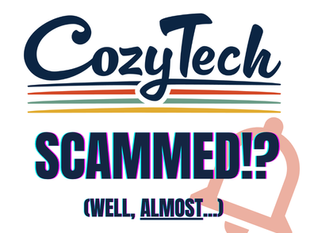
Windows 10 support is ending soon. Are you ready?
Oct 20, 2024
4 min read
0
2
0
Windows 10 has just entered its final year of support. That means if you are using Windows 10 after October of 2025, you will not receive any additional updates or fixes. If a hacker discovers a vulnerability in Windows 10 that lets them into your computer, Microsoft will not fix it. They want you to upgrade to Windows 11. But there's just one problem...
Not all computer hardware in homes today supports Windows 11. This is especially true if you own a machine that shipped with Windows XP, Vista, 7, or 8. There's a special part inside of computers called the "TPM", and many (in fact, most) computers in homes today do not have the right version of this chip to support Windows 11. This leaves you in a bind!
What is TPM?
TPM stands for "Trusted Platform Module", and it is a special 'chip' inside of your computer for creating, storing, and processing "cryptographic keys".
Cryptography is the art of taking messages and hiding them in "code", and we've been doing it as humans since at least the times of Julius Caesar. In the modern day, cryptography is the backbone of all electronic security, and it requires a lot of heavy-duty math! And if "cryptography" is the art of "locking down" information by hiding or obscuring it, then a "cryptographic key" is the key that "unlocks" that information.
They're pretty complicated. Here's an example:
-----BEGIN OPENSSH PRIVATE KEY----- b3BlbnNzaC1rZXktdjEAAAABAAAAQQDlA5BhdI5/jB6GBqtXBk/sbWjAhcABRwn2Aq GdfEoBquDbyOqk89BE7ggzctwrQvbhBvY0xMbFX5Xj6F/syA3GvXAAAAgQDjA7x5jS pLz1V5R4jZbkJm7yz90DZEBjTz1lmNspNNBCT2BXNVbCs98KvViL+kOwwW94ByyO1k 6YAzD1tw7Q4JqmiZwAAAB9/zdCsTfpYPJgrZ0N1v0ihsSUe4oSY10UgPa7QvGHeeiH FKHJ7Z56MvDrtSFAAAAIEAqg5OG+
Your computer needs to be able to generate those keys, and keep them in a safe place. It's also helpful if your computer has a specialized part that is very good at doing the math associated with using these keys to lock and unlock things.
That's what the Trusted Platform Module does. So, what's the issue?
TPM 2.0. As with everything in computing, the longer a piece of software or hardware exists, the higher the likelihood that it will be found lacking in some way. TPM 1.2 was finalized in 2011, and eventually, its successor, TPM 2.0, became the new and improved standard. And while TPM 2.0 began shipping in 2016, it wasn't necessarily common on machines shipped until nearer to 2021, when Microsoft announced it would be a requirement for any machine looking to upgrade to Windows 11.
How do I know if my computer meets the TPM 2.0 requirement?
On your Windows computer, open the Start menu, and begin typing (even if you don't see a space to type): tpm.msc
If you receive an error, then you have no TPM or it is not activated. It is likely your computer will not be compatible with Windows 11.
If instead, a piece of software called Trusted Platform Module (TPM) Management on Local Computer opens, then, we can confirm you at least have a TPM. In the middle column of sections, identify a lower section called TPM Manufacturer Version. Look at the right side of that section, and find the words, Specification Version. Next to that should be either a 1.2 or a 2.0. If your machine says 2.0, you should be ready for a Windows 11 upgrade if that's how you want to proceed!
What if I don't have TPM 2.0?
If your computer is custom-built, you can replace a number of parts to bring it up to spec, and then buy Windows 11. This includes your mainboard (traditionally known as a motherboard), as well as the main components that reside on it: your CPU (central processing unit, or, "processor"), and your RAM (random-access memory, or, "memory"). This can be done for a few hundred dollars.
If your computer is from a major brand like Dell or HP, or if it is a laptop, there is likely no way to upgrade all of the required hardware in the necessary way. In that case, you have two remaining options:
For people with no viable upgrade path
Option 1: Replace the computer entirely. You might want help choosing the right machine so you don't buy a near-future paperweight! CozyTech can help guide you to a computer that meets your needs, within your price range.
Option 2: Replace Microsoft Windows with a free operating system called Linux, which can do many of the same things, like browse the web and manage documents and media. Increasingly many mainstream applications like Spotify and Discord are available for Linux, and there are many free or paid alternatives to traditional Microsoft apps. For example, the LibreOffice suite is compatible with Microsoft standbys like Word and Excel, and it is entirely free as well!
(Above) A sample screenshot of Linux, a free operating system that can operate much like Windows
If you'd like help upgrading to an existing computer to Microsoft Windows 11, replacing Windows with Linux, upgrading your computer's hardware to support an upgrade, or replacing that hardware altogether, CozyTech can help! Visit our Contact Page to inquire about our services!







